Separation of Upslope Flow over a Plateau
Abstract
1. Introduction
2. Experiments
3. Results
3.1. Separation Length
3.2. Mean Separation Velocity
4. Conclusions
- (1)
- Given that the slope is topped by a plateau of finite width (), the influence of the plateau on the upslope flow could be expressed in terms of an effective slope angle where is the slope length and is the physical slope angle. For effective angles of 45°, the separation length increases with . When °, the upslope flow reached the apex and did not separate, which is independent of the plateau width. In this configuration, the upslope flow is insufficient to feed the plume that has formed on the plateau, thus requiring additional horizontal entrainment of the ambient fluid to the plume.
- (2)
- When , there exists a sub-regime, in which the fluid parcels horizontally penetrate the plume near the separation point. The flow approaches that of a plume that is emanating from a uniformly heated horizontal source of finite width. The relationship between the separation length and the width of the plume for this case is observed to be .
- (3)
- The mean upslope velocity at the separation point is dependent on the buoyancy flux, the effective slope angle, and the separation length. The upslope flow velocity scale that was proposed by Hocut et al. [7], was shown to also be valid in the present study, if the effects that are induced by the plateau are incorporated, using the effective angle definition.
Author Contributions
Acknowledgments
Conflicts of Interest
References
- Strobach, K. Unser Planet Erde: Ursprung und Dynamik; Brontraeger: Berlin, Germany, 1991; p. 253. [Google Scholar]
- Whiteman, C.D. Mountain Meteorology: Fundamentals and Applications; Oxford University Press: Oxford, UK, 2000. [Google Scholar]
- Fernando, H.J.S. Fluid dynamics of urban atmospheres in complex terrain. Annu. Rev. Fluid Mech. 2010, 42, 365–389. [Google Scholar] [CrossRef]
- Mayr, G.J.; Armi, L.; Gohm, A.; Zängl, G.; Durran, D.R.; Flamant, C.; Gaberšek, S.; Mobbs, S.; Ross, A.; Weissmann, M. Gap flows: Results from the Mesoscale Alpine Programme. Q. J. Royal Meteorol. Soc. 2007, 133, 881–896. [Google Scholar] [CrossRef]
- Lu, R.; Turco, R.P. Air pollutant transport in a coastal environment. Part I: Two-dimensional simulations of sea-breeze and mountain effects. J. Atmos. Sci. 1994, 51, 2285–2308. [Google Scholar] [CrossRef]
- Crook, N.A.; Tucker, D.F. Flow over heated terrain. Part I: Linear theory and idealized numerical simulations. Mon. Weather Rev. 2005, 133, 2552–2564. [Google Scholar] [CrossRef]
- Hocut, C.M.; Liberzon, D.; Fernando, H.J.S. Separation of upslope flow over a uniform slope. J. Fluid Mech. 2015, 775, 266–287. [Google Scholar] [CrossRef]
- Banta, R.M. Daytime Boundary-layer evolution over mountainous terrain. Part I: Observations of the dry circulations. Mon. Weather Rev. 1984, 112, 340–356. [Google Scholar] [CrossRef]
- Chao, W.C. Correction of excessive precipitation over steep and high mountains in a GCM. J. Atmos. Sci. 2012, 69, 1547–1561. [Google Scholar] [CrossRef]
- Fast, J.D.; de Foy, B.; Rosas, F.A.; Caetano, E.; Carmichael, G.; Emmons, L.; McKenna, D.; Mena, M.; Skamarock, W.; Tie, X.; et al. A meteorological overview of the MILAGRO field campaigns. Atmos. Chem. Phys. 2007, 7, 2233–2257. [Google Scholar] [CrossRef]
- Whiteman, C.D.; Zhong, S.; Bian, J.D.; Doran, J.C. Boundary layer evolution and regional-scale diurnal circulations over the Mexico Basin and Mexican plateau. J. Geophys. Res. 2000, 105, 10081–10102. [Google Scholar] [CrossRef]
- Kleinman, L.I.; Springston, S.R.; Daum, P.H.; Lee, Y.N.; Nunnermacker, L.J.; Senum, G.I.; Wang, J.; Weinstein-Lloyd, J.; Alexander, M.L.; Hubbe, J.; et al. The time evolution of aerosol composition over the Mexico City plateau. Atmos. Chem. Phys. 2008, 8, 1559–1575. [Google Scholar] [CrossRef]
- De Foy, B.; Caetano, E.; Magana, V.; Zitacuaro, A.; Cardenas, B.; Retama, A.; Ramos, R.; Molina, L.T.; Molina, M.J. Mexico City basin wind circulation during the MCMA-2003 field campaign. Atmos. Chem. Phys. 2005, 5, 2267–2288. [Google Scholar] [CrossRef]
- Raga, G.B.; Baumgardner, D.; Kok, G.; Rosas, I. Some aspects of boundary layer evolution in Mexico City. Atmos. Environ. 1999, 33, 5013–5021. [Google Scholar] [CrossRef]
- Baumgardner, D.; Raga, G.B.; Kok, G.; Ogren, J.; Rosas, I.; Baez, A.; Novakov, T. On the evolution of aerosol properties at a mountain site above Mexico City. J. Geophys. Res. 2000, 105, 22243–22253. [Google Scholar] [CrossRef]
- Reuten, C.; Steyn, D.G.; Strawbridge, K.B.; Bovis, P. Observations of the relation between upslope flows, the convective boundary layer in steep terrain. Bound.-Layer Meteorol. 2005, 116, 37–61. [Google Scholar] [CrossRef]
- Reuten, C.; Steyn, D.G.; Allen, S.E. Water tank studies of atmospheric boundary layer structure and air pollution transport in upslope flow systems. J. Geophys. Res. 2007, 112, 2156–2202. [Google Scholar] [CrossRef]
- De Wekker, S.F. Observational and numerical evidence of depressed convective boundary layer height near a mountain base. J. Appl. Meteorol. Climatol. 2008, 65, 323–355. [Google Scholar] [CrossRef]
- Serafin, S.; Zardi, D. Structure of the atmospheric boundary layer in the vicinity of a developing upslope flow system: A numerical model study. J. Atmos. Sci. 2010, 67, 1171–1185. [Google Scholar] [CrossRef]
- Serafin, S.; Zardi, D. Daytime heat transfer processes related to slope flows and turbulent convection in an idealized mountain valley. J. Atmos. Sci. 2010, 67, 3739–3756. [Google Scholar] [CrossRef]
- Fernando, H.J.S.; Lee, S.M.; Anderson, J.; Princevac, M.; Pardyjak, E.; Grossman-Clarke, S. Urban fluid mechanics: Air circulation and contaminant dispersion in cities. Environ. Fluid. Mech. 2001, 1, 107–164. [Google Scholar] [CrossRef]
- Hunt, J.C.R.; Fernando, H.J.S.; Princevac, M. Unsteady thermally driven flows on gentle slopes. J. Atmos. Sci. 2003, 60, 2169–2182. [Google Scholar] [CrossRef]
- Princevac, M.; Fernando, H.J.S. A criterion for the generation of turbulent anabatic flows. Phys. Fluids 2007, 19, 105102. [Google Scholar] [CrossRef]
- Liberzon, D.; Shemer, L. Experimental study of the initial stages of wind waves’ spatial evolution. J. Fluid Mech. 2011, 681, 462–498. [Google Scholar] [CrossRef]
- Kline, S.J.; McClintock, F.A. Describing uncertainties in single-sample experiments. Mech. Eng. 1953, 75, 3–8. [Google Scholar]
- Chen, C.C.; Labhabi, A.; Chang, H.C.; Kelly, R.E. Spanwise paring of finite-amplitude longitudinal vortex rolls in inclined free-convection boundary layers. J. Fluid Mech. 1991, 231, 73–111. [Google Scholar] [CrossRef]
- Colomer, J.; Boubnov, B.M.; Fernando, H.J.S. Turbulent convection from isolated sources. Dyn. Atmos. Oceans 1999, 30, 125–148. [Google Scholar] [CrossRef]
- Rouse, H.; Yih, C.S.; Humphreys, H.W. Gravitational convection from a boundary source. Tellus 1952, 4, 201–210. [Google Scholar] [CrossRef]
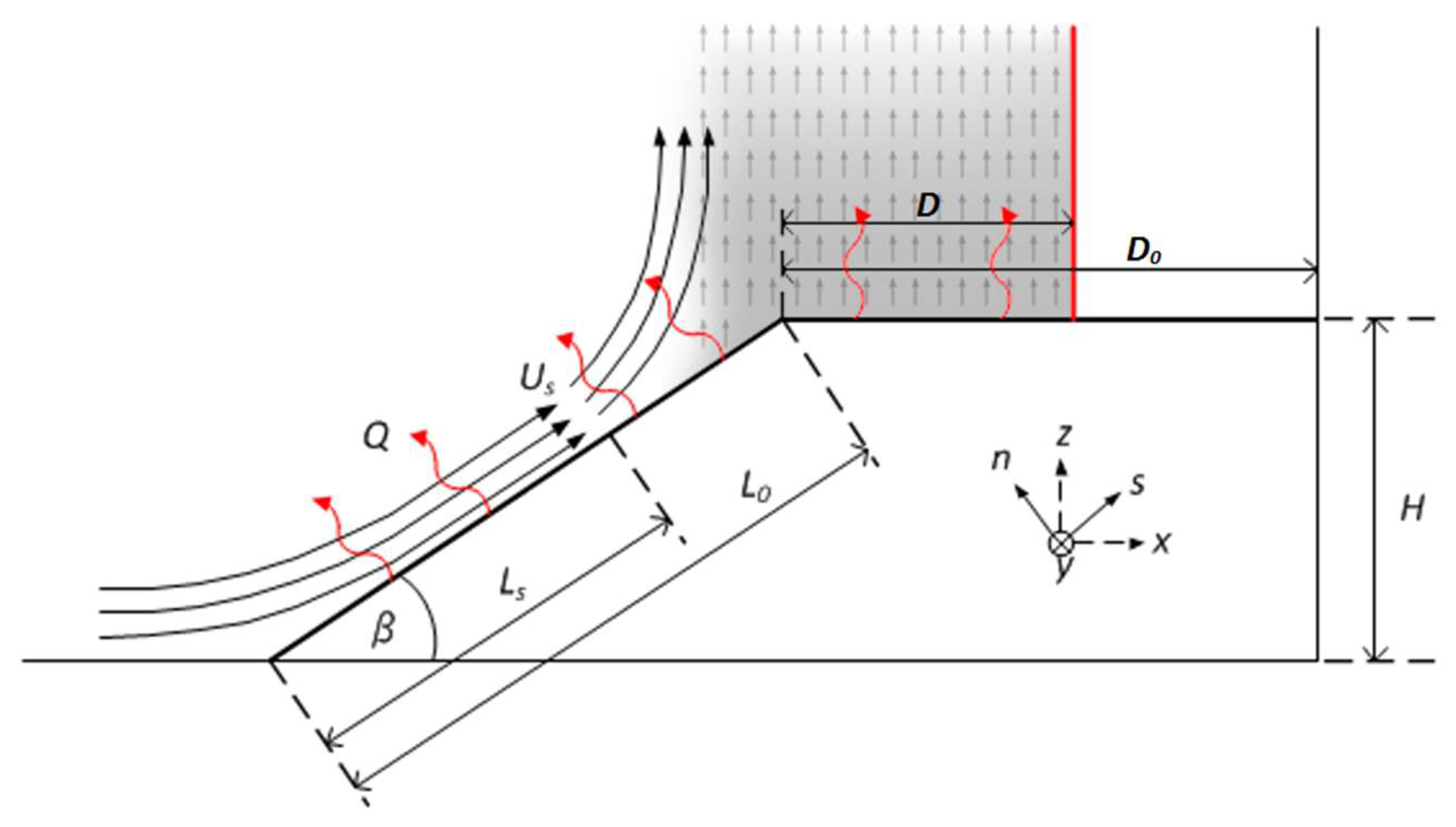
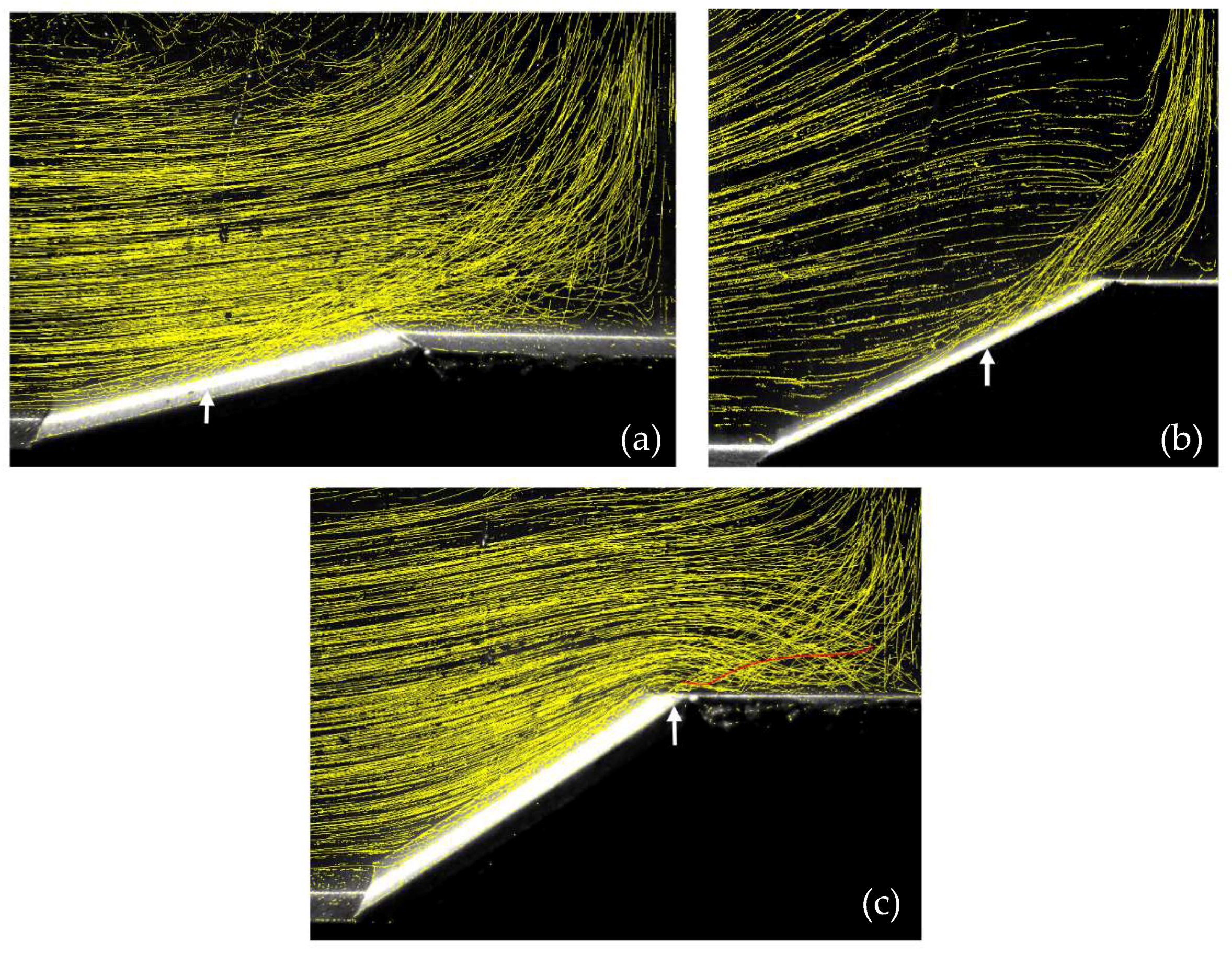
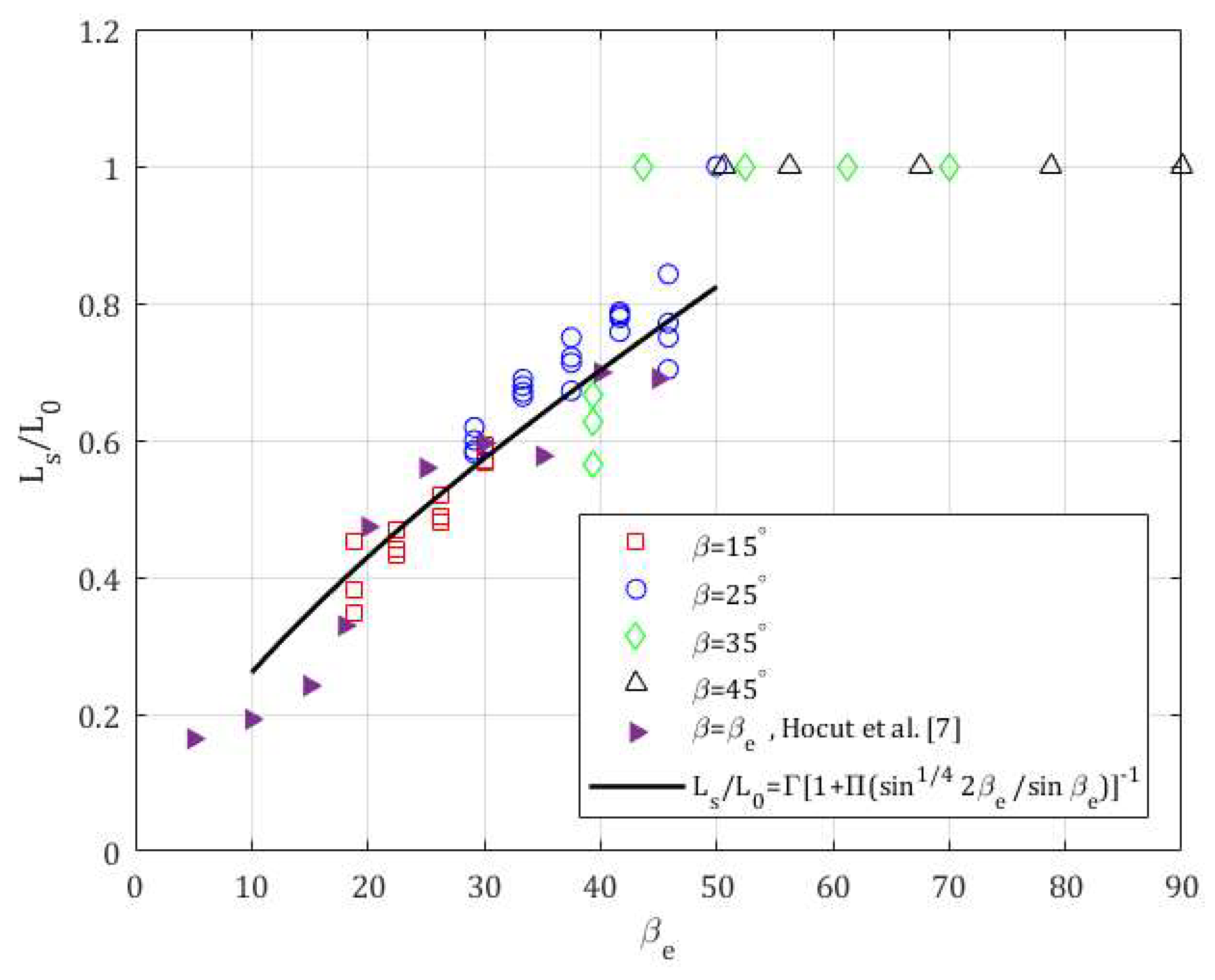
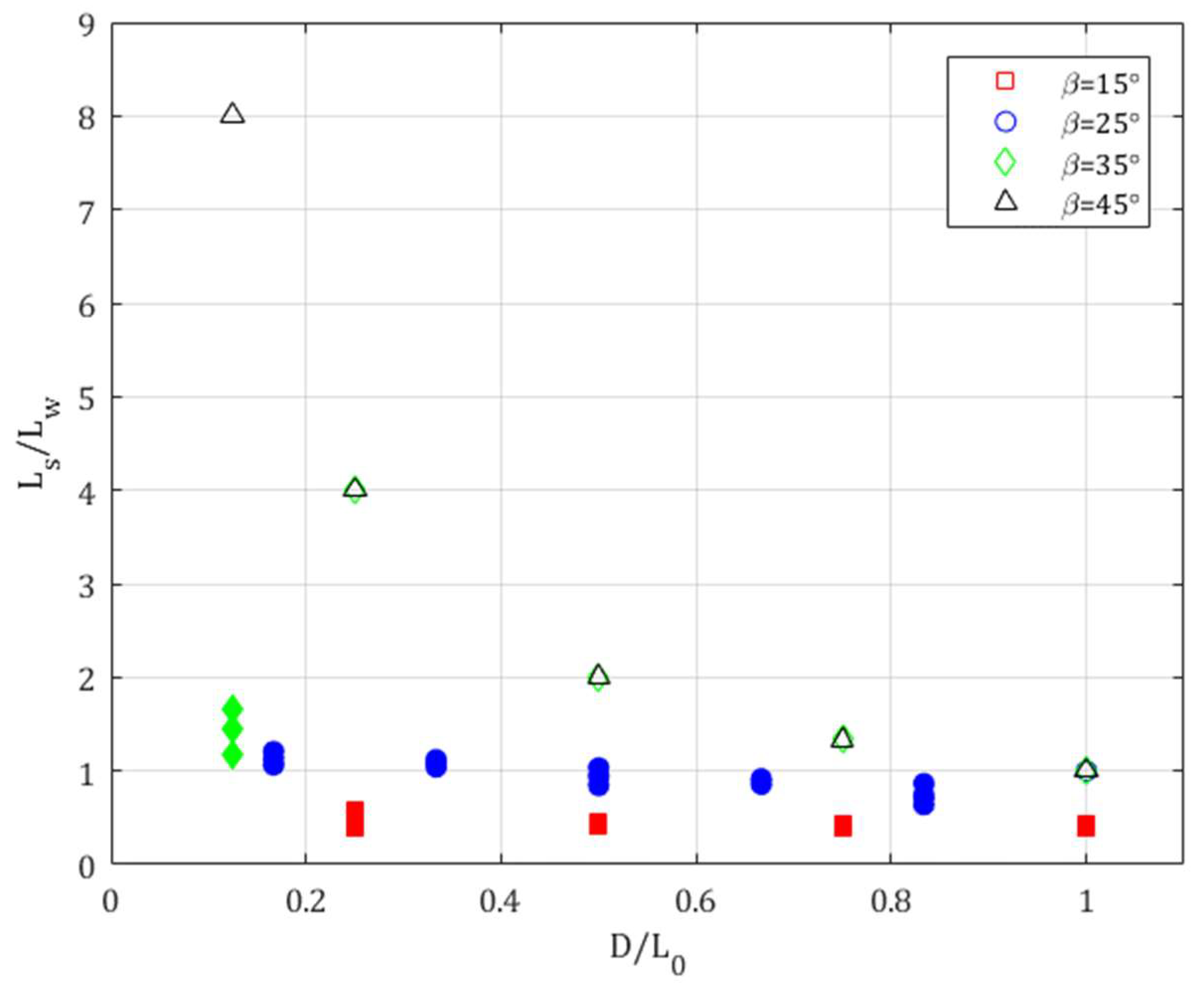
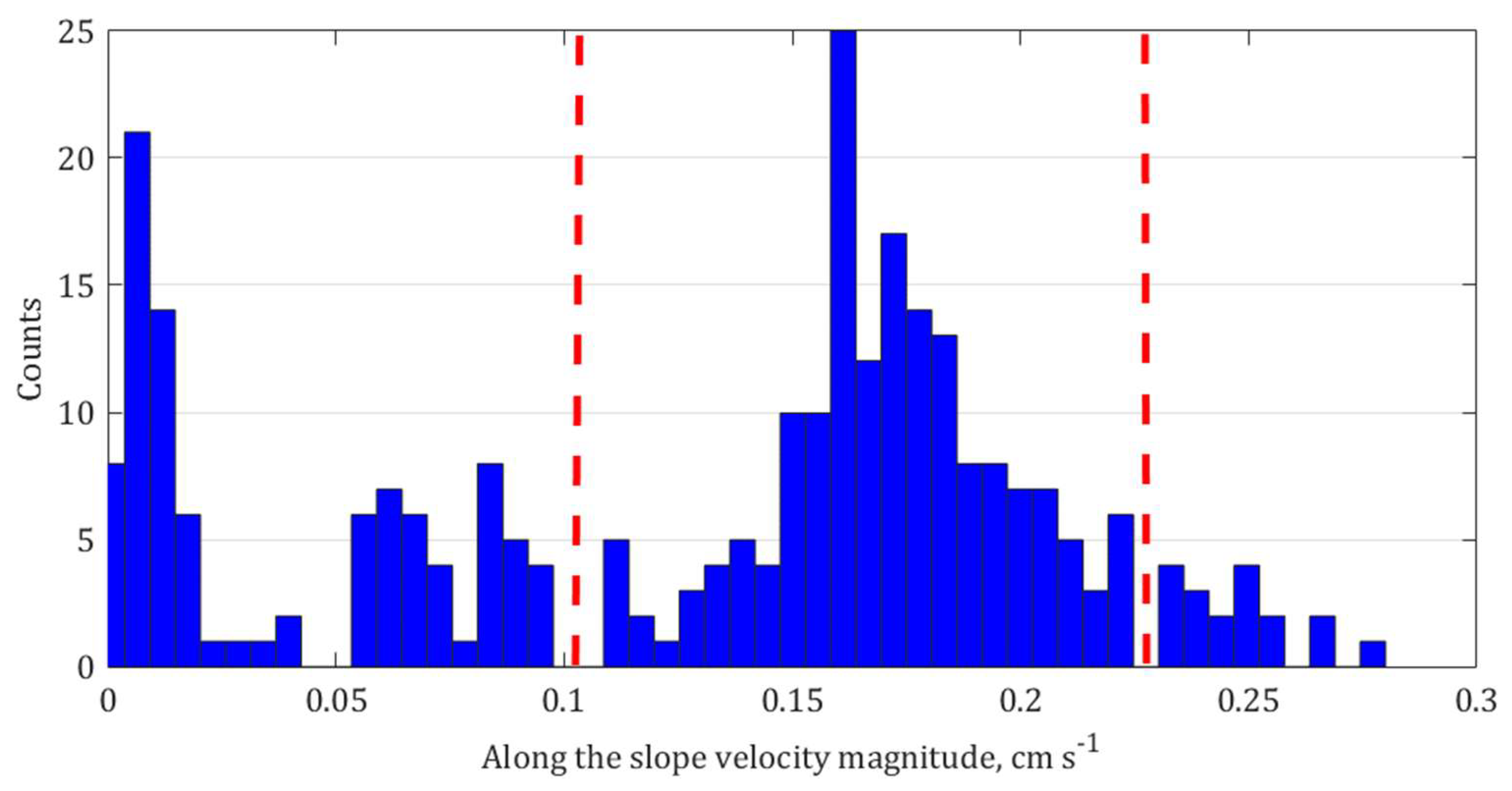
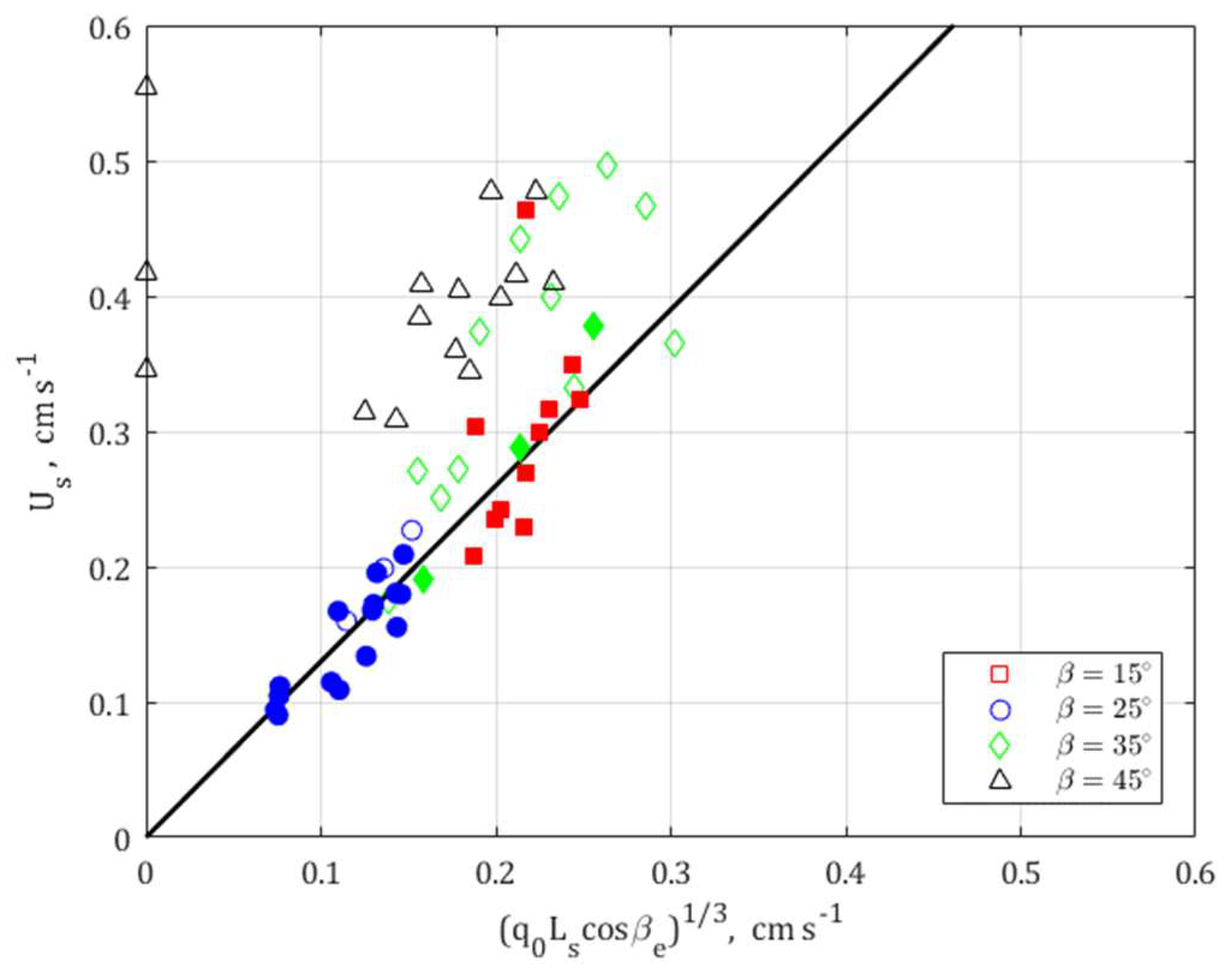
| (degrees) | (-) | (degrees) | (m2/s3) | (s) |
|---|---|---|---|---|
| 15 | 0, 1/4, 1/2, 3/4, 1 | 15, 18.75, 22.5, 30 | 9.94 × 10−8, 1.49 × 10−7, 1.98 × 10−7 | 50, 80, 120 |
| 25 | 0, 1/6, 1/3, 1/2, 2/3, 5/6, 1 | 25, 29.17, 33.33, 37.5, 41.67, 45.83, 50 | 4.93 × 10−9, 1.5 × 10−8, 2.5 × 10−8, 3.5 × 10−8 | 100 |
| 35 | 0, 1/8, 1/4, 1/2, 3/4, 1 | 35, 39.38, 43.75, 52.5, 61.25, 70 | 5 × 10−8, 2.45 × 10−7, 1.3 × 10−7 | 50 |
| 45 | 0, 1/8, 1/4, 1/2, 3/4, 1 | 45, 50.63, 56.25, 67.5, 78.75, 90 | 6.4 × 10−8, 9.6 × 10−8, 1.28 × 10−7 | 50, 80 |
© 2018 by the authors. Licensee MDPI, Basel, Switzerland. This article is an open access article distributed under the terms and conditions of the Creative Commons Attribution (CC BY) license (http://creativecommons.org/licenses/by/4.0/).
Share and Cite
Hilel Goldshmid, R.; Bardoel, S.L.; Hocut, C.M.; Zhong, Q.; Liberzon, D.; Fernando, H.J.S. Separation of Upslope Flow over a Plateau. Atmosphere 2018, 9, 165. https://doi.org/10.3390/atmos9050165
Hilel Goldshmid R, Bardoel SL, Hocut CM, Zhong Q, Liberzon D, Fernando HJS. Separation of Upslope Flow over a Plateau. Atmosphere. 2018; 9(5):165. https://doi.org/10.3390/atmos9050165
Chicago/Turabian StyleHilel Goldshmid, Roni, Stef L. Bardoel, Christopher M. Hocut, Qiang Zhong, Dan Liberzon, and Harindra J. S. Fernando. 2018. "Separation of Upslope Flow over a Plateau" Atmosphere 9, no. 5: 165. https://doi.org/10.3390/atmos9050165
APA StyleHilel Goldshmid, R., Bardoel, S. L., Hocut, C. M., Zhong, Q., Liberzon, D., & Fernando, H. J. S. (2018). Separation of Upslope Flow over a Plateau. Atmosphere, 9(5), 165. https://doi.org/10.3390/atmos9050165





